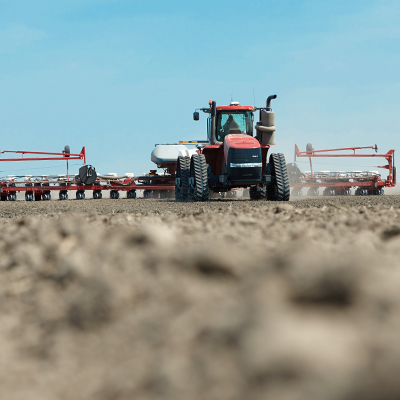Regulatory Harmony Tops Most Pressing Issues for Biostimulants Market
What are the most pressing issues in the world of biostimulants? What facets of the biologically derived additives might surprise ag retailers? Eight officials representing biostimulant suppliers offered CropLife® magazine the following responses to these questions:
Most Pressing Issue
John Fisher, Director of Product Innovation and Market Development, BioLiNE Corp. — “(It) continues to be the ambiguity around a legislative definition of biostimulants and uncertainty regarding the regulatory framework that they will fall under at the federal and state levels. Tremendous strides were taken in 2019 with input from industry, culminating in a report to the President of the United States and the U.S. Congress on Plant Biostimulants submitted by USDA in consultation with the EPA on Dec. 29. As a member of the U.S. Biostimulant Coalition (USBC), we were involved, along with representatives from a number of other companies, in providing recommendations.”
Tommy Roach, Vice President of Specialty Products and Technical Services, Nachurs — “Right now (it) revolves around labeling/regulations and consistent product performance. Labeling and regulations vary by state and are now trying to be placed under EPA control, which is not where these products belong, as they are not pesticides. Consistent product performance continues to be a struggle in commodity crops like corn and wheat, but progress is being made in this area and especially in specialty crops (fruit, vegetable, etc.)”
Jarrett Chambers, Chief Commercial Officer, Concentric — “There are so many options in the space that it is hard to differentiate between them, and a lack of regulatory harmony at a state and federal level adds to the confusion. Growers must know the right questions to ask: ‘What exactly is this product comprised of? What does it do in the plant? Does the company who manufactured it have the analytical capability, knowledge, and commitment to answer these questions?’”
Johnny McRight, Founder/Owner, DeltAg Formulations — “It is difficult to narrow this down to one issue as being the most pressing. In some parts of the world, the No. 1 issue is efficacy. Does the product increase yield or improve plant health? In other countries the main issue, I believe, is that there are so many new companies that have entered this segment of the ag industry that it is becoming more and more difficult to create separation from the pack. In the U.S. we are still on hold and waiting to see where these products will fit in — fertilizers, USDA, or EPA. And when will this determination be made?”
John Wolf, Senior Director of Innovation, Agricen — “An important issue for the biostimulant industry is centered on the science. As an industry, we need to continue to develop and mature the science around this segment to allow us to deliver more prescriptive solutions to growers. For biostimulants to deliver the full potential of the technology to growers, the industry will have to become much more targeted in regard to use patterns and practices.”
Bill Diederich, Senior Executive Vice President of Agribusiness, BiOWiSH Technologies — “(It) is a lack of understanding of what biostimulants are, what they do, and how they do it. The key to addressing this is educating retailers and growers about the different classes of biostimulants, the different modes of action that each biostimulant class has, and how these can be used to overcome problems in crop production.”
Tom Snipes, CEO, Plant Response — “At the moment (it) is the need for regulatory clarity. The USDA has been mandated to define the term biostimulant, and the EPA is working on the issue from their end. These two entities need to be closely coordinated in how they approach this effort. Most biostimulants gained wide adoption in the industry after the FIFRA law passed; however, there’s uncertainty around the exact definition of a biostimulant and how it differs from a plant growth regulator.”
Alexander Duffy, National Product Manager, Timac Agro USA — “(It) is defining ‘biostimulant’ and differentiation/modes of action of the products. The issue is being addressed by the amount of competition in the market, and that is driving companies themselves to do the research on the modes of action. This is resulting in products that fit better into production systems and solutions to specific problems rather than a one-product-fits-all strategy.”
FYIs for Retailers
Duffy, Timac Agro USA — “Ag retailers should know that all the products that fit under the umbrella of biostimulants are not created equally. This is a very crowded segment of the market. I would encourage retailers to evaluate each product and supplier separately and do research on the company and what is behind the products in terms of support, research, and partnerships. There are so many products, sourcing, and modes of actions, they may be leaving a great solution on the table by lumping all of the products together and viewing them the same.”
Diederich, BiOWiSH Technologies — “Ag retailers and farmers alike need to understand that biostimulants are not ‘one size fits all.’ Different formulations address yield-limiting factors differently. For example, if soil nutrients are limited and/or root growth is poor, our approach is to use a stable, compatible consortia of selected microbes applied by coating onto solid fertilizers or mixing with liquid fertilizers to increase nutrient efficiency and promote root growth to improve nutrient uptake and assimilation.
This is a much more viable alternative to inoculating the soil with microbes. But not all microbial biostimulants are created equal — most companies have their own proprietary strains and fermentation processes. It has become obvious to us, after years of study of this class of biostimulants, that, even if a formula’s CFU (colony forming unit) count is higher, it doesn’t necessarily follow that the crop response will be greater.”
Fisher, BioLiNE Corp. — “(Retailers) should know that biostimulants are not magic bullets or a wand that can be waved to solve all of the challenges that come from the time a seed is planted to harvest. We know that the genetic yield potential of the seeds we sow are far greater than the real-world yields we see on our farms. Biostimulants are able to preserve some of that yield potential; however, for effective usage, they need to be deployed as part of a solid agronomic program that includes nutrients (macro and micro), pest-control, soil health, and water management. They are not a replacement for good agronomy. Understanding how to use and compare products not only by the chemistry of active ingredients but also by bioactivity, consistency, ease-of-application, compatibility, and performance will help increase the on-farm success of biostimulants.”
Wolf, Agricen — “The science involved in development and implementation of the biostimulants being brought to the marketplace today is cutting edge. In the modern biostimulants industry, the days of companies mixing up random ingredients and hoping for a perceived value are, we hope, behind us. Today’s companies are using science and technology to formulate biostimulants that can induce superior plant responses with greater nutrient-use efficiency and sustainability.”
Chambers, Concentric — “Biostimulants work. But you have to know when and where they work. It has been well researched that biostimulants complement a strong nutrient management program by improving nutrient-use efficiency and helping alleviate abiotic stress on the crop.”
McRight, DeltAg Formulations — “Whether you are encouraged by a product or not, I believe it is critically important to recognize that every one of these products has a creative person behind the idea of that product that has put many an hour and dollar into what the ingredients need to be, the formulating, product shelf life, stability, application timing and rate, field trials, university studies, registrations, marketing, and much more. We sometimes hear derogatory remarks about these types of products from those that just don’t know but think they do. Those folks should, at the least, recognize that there is someone out there who has put heart and soul into development of such products. Earning respect for this segment in our industry has been very difficult in the U.S., and I would have to believe that is no different in other parts of the world.”
Roach, Nachurs — “There are many companies in the market promoting their products as having stimulatory effects. I suggest retailers and growers do their homework and diligence when deciding which company to engage with. There is no doubt that some products will help with nutrient-use efficiency, which in turn will aid in nutritional balance.”
Snipes, Plant Response — “The term ‘biostimulants’ has been used too broadly. Customers should look at this space and focus on the specific product benefit, the value proposition to the grower, and how it fits into their system vs. looking at the broad generic category. The technology is advancing rapidly in this space with more specificity around mode of action and how that can benefit a grower. Ag retailers should challenge their suppliers to define where the technology best fits.”






